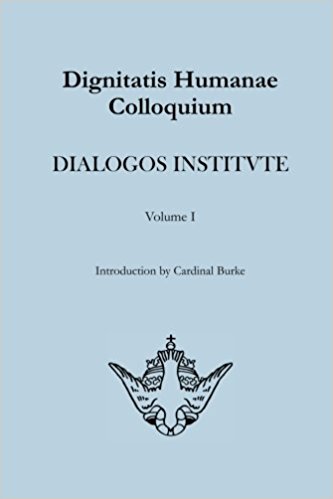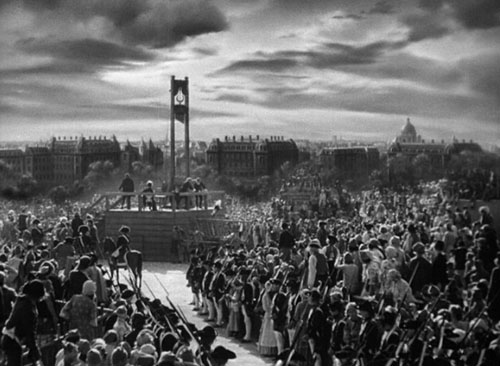The American journal Commonweal has recently published a book review of Thomas Crean’s and Alan Fimister’s Integralism: a manual of political philosophy. The book review misrepresents the book in certain ways and criticises it in others. The present article will explain some of the misrepresentations and analyse the criticisms.
The most serious misrepresentation lies in the reviewer’s statement that “Integralism clearly breaks with Vatican II’s teaching on religious liberty”. The last ecumenical council’s document on religious liberty, Dignitatis humanae, meets the criteria for an infallible definition in its central teaching. More precisely, it seems to contain a definition of a ‘secondary object’ of the magisterium, that is, something which may not be directly divinely revealed, but which can be taught infallibly insofar as it has a necessary connection with divine revelation. But according to the ‘Doctrinal Commentary on the Professio Fidei’ produced by the Congregation for the Doctrine of the Faith in 1998, anyone who denies a secondary object of the magisterium which has thus been taught infallibly, is no longer in full communion with the Catholic Church. Crean and Fimister, however, not only do not deny the central teaching of Dignitatis humanae; they take pains to explain what this teaching means, and how it is compatible with what Dignitatis humanae calls elsewhere “the duty of men and societies toward the true religion and toward the one Church of Christ”. In accusing Crean and Fimister of upholding a position which would deprive them of communion with the Catholic Church, the editors of Commonweal have fallen into an error which they need to retract, lest they be liable to prosecution under canon 220 of the Code of Canon Law, which guarantees the right of the faithful to their good name.
Another serious, not to say libellous, misrepresentation in Commonweal’s book review is its claim that the authors are “driven more by nostalgia for the ancien régime than loyalty either to theological authorities or the Church’s magisterium”. The phrase ancien régime, used without qualification, refers to those royal houses that lost their pre-eminence as a result of the French Revolution and the Napoleonic wars, especially the house of Bourbon. The reviewer offers no evidence for his claim that the authors of Integralism are motivated even partly, let alone principally, by affection for these royal dynasties, an affection which in fact is not particularly common among Englishmen. The reason why no evidence is offered is that there is none to offer: nothing in their manual suggests that its authors believe that the return of these royal houses is a necessary or natural prelude to the building of Christendom. The reviewer is writing at random.
Connected to this error is his claim that the authors’ ideal is hereditary monarchy. In fact, they examine the arguments for and against hereditary monarchy, without coming down on either side, concluding rather to the desirability of a variety of forms of polity. The reviewer has perhaps misunderstood their statement that it seems desirable to include some element of hereditary power within a polity: but this need not mean hereditary monarchy, as the example of the House of Lords in Great Britain shows and, as they point out, citizenship is hereditary in almost all polities. They quote at length Leo XIII’s praise of the U.S. Constitution as a “well-ordered republic”. Equally astray is his claim that Crean and Fimister are followers of the 17th century author, Robert Filmer, for whom patriarchal monarchy was the only lawful form of government; they expressly state that Filmer’s account would apply only to unfallen man.
The reviewer errs, again, in claiming that Crean and Fimister recommend that women not have a right to vote except when they are at the head of a household. They say, on the contrary, that it is fitting that all citizens enjoy a basic equality of suffrage, and women are explicitly included in this. They go on to say that nothing prevents certain citizens from enjoying further titles to suffrage, such as education, military service or the headship of a family. Integralism rejects not women’s suffrage but the dogmatic insistence on the principle ‘one person one vote’. Likewise, there is nothing in the book to suggest that women should not occupy public office, whether legislative, judicial or executive. So much for the reviewer’s claim that women are “written out of its narrative”.
He is also incorrect to claim that Integralism holds that all non-Catholics in a restored Christendom must be denied voting rights. It states, rather that the higher public offices would be restricted to Catholics, while at the same time allowing for representatives of non-Catholic bodies, whose task would be to protect the rights and interests of such bodies, including the right of monotheists to freedom of worship within the due limits laid down by Dignitatis humanae. Such representatives could be chosen by those whom they represent.
Still under the general heading of misrepresentations we may include the reviewer’s statement that the book has an “odd libertarian streak”. He offers no examples of libertarian doctrines to be found in the book. It defines and dismisses libertarianism in a footnote, condemns usury and upholds the living wage.
We may now turn to those criticisms which are not due simply to misrepresentations. Some are classic examples of the suppressio veri and suggestio falsi. Thus, Commonweal’s reviewer quotes the authors’ statement that slavery can be a “valid legal relationship”, something which anyone who believes in the divine origin of the Hebrew scriptures must accept, omitting to mention that the term ‘slavery’ in their analysis extends to most forms of paid employment and without quoting their further statement that it is wise for other forms of slavery to be forbidden in modern conditions, given the immense scope which they afford for abuse. Nor does he mention that they describe slavery as “the most extreme of all evils” and declare chattel slavery (what most mean by the term) null and void. He also paraphrases the authors, crudely enough, as saying that women “must offer sex” to their husbands whenever requested, offensively insinuating thereby that a passing assertion of the fact that both spouses owe each other the marriage debt (an uncontroversial repetition of the doctrine of St Paul) is some sort of license for marital rape. The reviewer can offer his apologies to the Apostle to the Gentiles when he meets him.
Next, the reviewer finds fault with the book’s sub-title, ‘A manual of political philosophy’. Writing a ‘manual’ is, he warns, “an attempt to channel authority” – which apparently means laying claim to an authority to which one is not entitled. Worse, it is “a subtle power play”, implying that one’s statements may not be questioned. However, nemesis is in store for our two authors: they fall unsuspecting into a “deep irony”, since manuals are “a thoroughly modern notion”. Things were done quite differently in the Middle Ages, you see; St Thomas Aquinas would have had no truck with manuals, since “in his greatest works” he avoided “a timeless, completed system”; he was interested in “genuinely responding to objections and frankly grappling with conflicting authorities”. Not for him the “distinctly modern anxiety” about disagreements among Catholic authors from which Crean and Fimister suffer.
What a pother. A manual is a book written in a concise style about a well-defined subject where the clarity and logical development of ideas are particularly aimed at. As such, it is an obvious pedagogical device for every age. The Summa theologiae is a 13th century manual of theology, albeit immeasurably superior to those of the 19th and 20th centuries, useful as these also are. In the patristic period we may mention St John Damascene’s Exposition of the Orthodox Faith and St Augustine’s Enchiridion on Faith, Hope and Charity as examples of the same genre: ‘enchiridion’ is simply the Greek for ‘manual’, since both words mean hand-book. Aristotle’s Peri Hermeneias is a manual of logic. And so on. Writing a manual on political philosophy yields no ‘irony’, whether deep or shallow.
In accusing the authors of Integralism of attempting, unlike St Thomas Aquinas, to write a ‘timeless, completed system’, the Commonweal reviewer is again writing at random, and, so to speak, thinking in clichés. No one but a megalomaniac could suppose himself to have said the last word on any subject; but anyone who attempts to write philosophy or theology seeks to express timeless truths. What is the Summa theologiae if not a vast ocean of such truths?
The authors are accused of ignoring “the messiness of Catholic tradition”. Yet they mention many influential Catholic writers who have upheld positions with which they disagree, from Marsilius of Padua to Henry de Lubac, from William Barclay to Luigi Taparelli. They note disagreements between important Catholic authorities, for example Suarez and Vitoria on the justification for an offensive war. Even in the case of a doctor of the Church to whom they attribute a high authority, St Robert Bellarmine, they note that his account of the people as the subject of civil power was importantly qualified by Cardinal Ottaviani, and they consider that the 20th century cardinal hit the target more precisely than his 16th century predecessor. The authors understand, with the angelic doctor, that in philosophy it takes time to reach the truth: the reviewer appears to confuse this proposition with the claim that there are no timeless truths to reach.
Integralism quotes from and harmonises a large number of fathers, saints and doctors of the Church, and many weighty magisterial teachings: for example, among others, St Gregory Nazianzen, St John Chrysostom, St Celestine I, St Leo I, St Gelasius I, St Augustine, St Gregory I, St John Damascene, St Gregory VII, St Peter Damian, St Bernard of Clairvaux, St Thomas Becket, St Thomas Aquinas, St Bonaventure, St Thomas More, St Robert Bellarmine, St Francis de Sales, Unam sanctam, Trent’s Decree on Baptism, Quanta cura, Libertas, Immortale Dei, Quas Primas, and Dignitatis humanae. The reviewer nevertheless informs his readers that “the integralists’ problem is not too much tradition, but not enough – that they are depriving their followers of the richness and depth of Catholic political thought”. Very good: we may now reasonably expect him to tell us about some of the riches and depths that Crean and Fimister overlooked, and then either to explain how these riches and depths complement the teachings which the authors have expounded, or, if the riches and depths are not compatible with these, why the teachings which Crean and Fimister overlooked should be given preference. But he does nothing of the kind. He simply tells us that Joseph Ratzinger once said that the teaching of Dignitatis humanae is in harmony with the patristic period – as if the authors had not said the same thing themselves, and explained why in great detail!
The reviewer is in fact ill at ease with the tradition of the fathers and doctors of the Church. Referring to Crean and Fimister’s reference to the two swords in Luke 22 as standing for temporal and spiritual power, he accuses them of “exegetical perversities”, of twisting and abusing Scripture, and of serving the libido dominandi. Strong words: but he omits to tell the reader what he must know at least from reading Integralism, namely, that this exegesis of the two swords is part of the patrimony of the Church, taught by many saints and doctors, and defined by Boniface VIII. It is not Crean and Fimister whom he should be accusing of abusing Holy Scripture and serving the lust for power; it is St Peter Damian or St Bernard. Let him do so if he dares. Again, he would like to claim St Augustine for himself, but he will not find this easy when he reflects that the City of God gives as a model Christian ruler, Theodosius I, who made continuation in the right faith concerning the Blessed Trinity a requirement of Roman citizenship.
Commonweal’s reviewer objects not so much to Crean and Fimister as to Christendom itself. For, despite the rhetorical dust kicked up by phrases such as “the messiness of Catholic tradition”, “debates that were precisely that: debates”, “the dialectical nature of tradition”, what he is opposing is the constitutional order that obtained from the time of Theodosius in the 4th century to the French Revolution. In this constitutional order, the temporal community was a community of the baptised, and temporal rulers understood that their highest duty and honour was to assist the spiritual power in bringing souls to heaven by laws which would foster sacramental life and the observance of the law of God while restraining the heresies by which all supernatural life is destroyed. This was Christendom. In addition to its citations from the saints and the magisterium, Integralism provides various further justifications of such an arrangement, including the need of sanctifying grace so that a society of fallen men may reach even its natural end; the rights of God and of Christ; the subordination of powers as flowing from the subordination of ends; and the desire to make it less hard for human beings to be saved.
The reviewer ignores these arguments, as he ignores the citations from the saints and the magisterium. Instead, he provides, or rather gestures towards, a counter-argument drawn from Holy Scripture. Integralists, that is, people who think that Christendom is a good thing, “forget that his [Christ’s] Lordship is manifest in service, and that his victory is accomplished in the powerless of the Cross.” They need to have their “imaginations […] remolded by Christ’s crucified body”, since otherwise they “disfigure his ecclesial body”. This appears to mean that just as our Lord suffered death for our salvation, so Christian rulers, whether spiritual or temporal, ought to allow His Church to be attacked by evil forces and not to use any temporal power to repel them.
One could point out in reply, as St Thomas pointed out in reply to the suggestion that Jewish children be baptised against their parents’ wishes, that this is not how the Christian rulers whom the Church venerates ever behaved, and that this answer should be enough for a Catholic. One might also point out that Blessed Pius IX infallibly condemned the opinion that rulers have no general duty to restrain violators of the Catholic religion, except as public order may require. But we may also answer the argument on its own terms. Our Saviour knew by His prophetic knowledge that it was the Father’s will that He should die for the world’s salvation on a certain day, at a certain time and place, and in a certain manner. Until His hour arrived, Christ preached the word, and He made use of supernatural power to restrain those who sought to harm or silence Him (Lk. 4:30; Jn. 8:59). Christian rulers do not generally have prophetic knowledge, and hence they cannot know that God in His wisdom requires them to imitate Christ’s ‘weakness’ on the Cross unless circumstances show them that providence has so decreed – as when Blessed Charles of Austria went his way into exile. Unless such circumstances arise, therefore, they do well to imitate their Lord by having the gospel preached, and restraining by the power that God has given them those who would silence or corrupt the word.
 INSTITVTE
INSTITVTE


